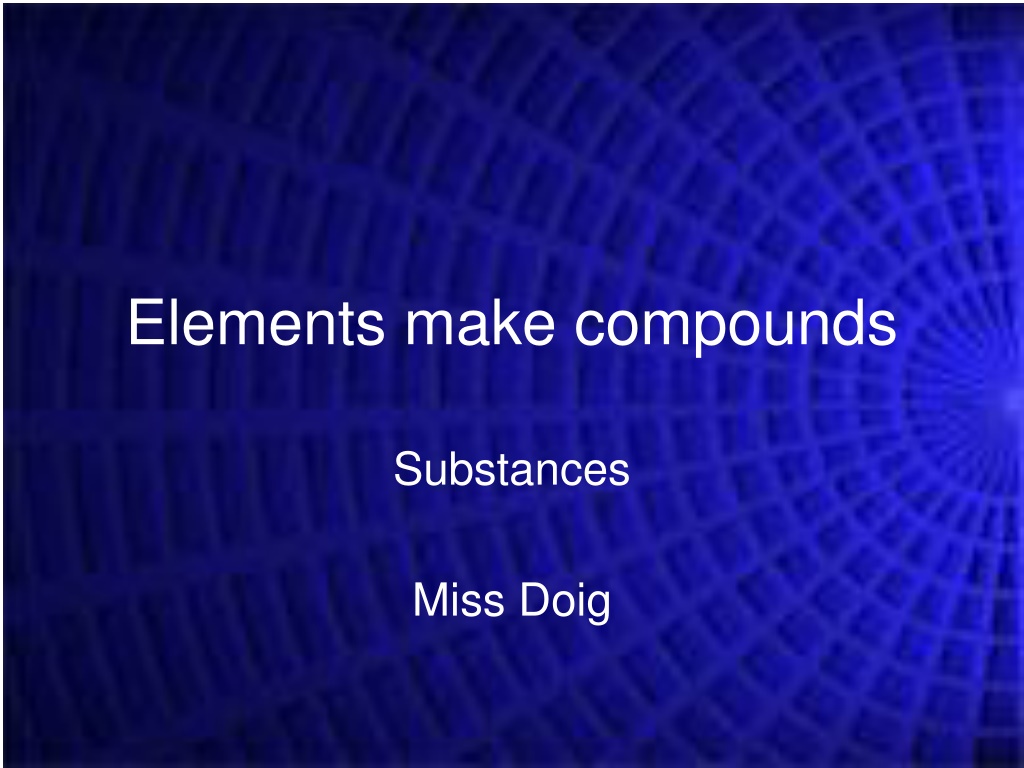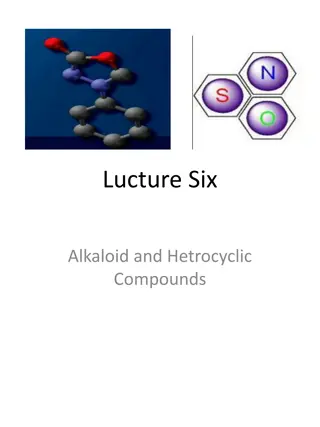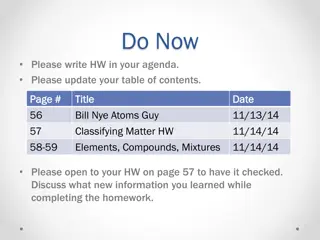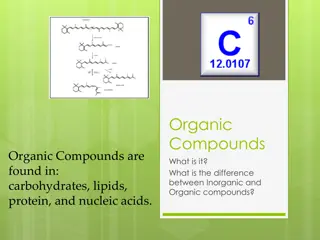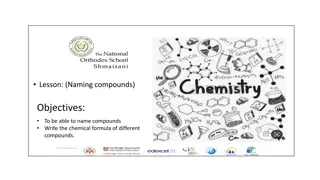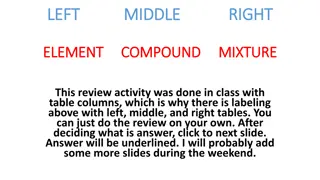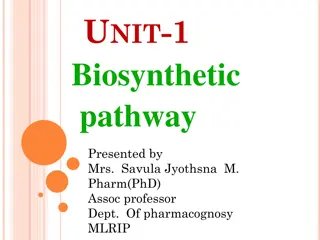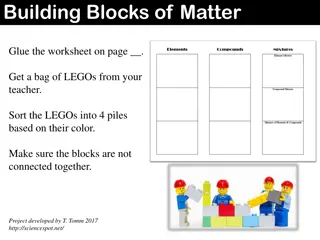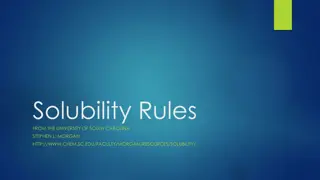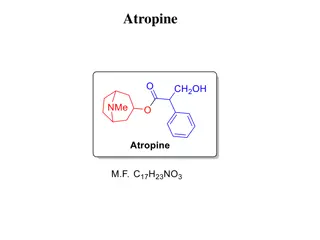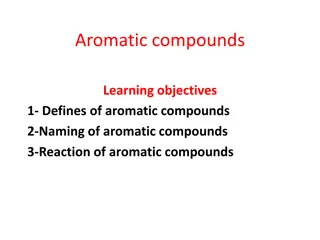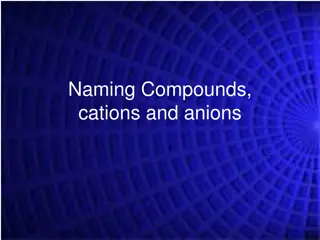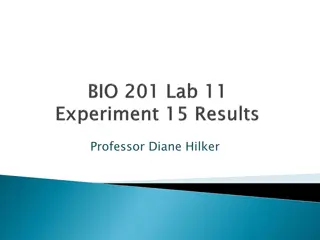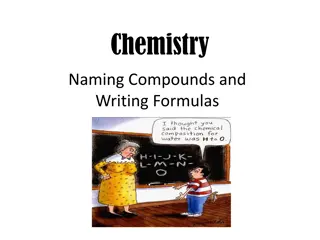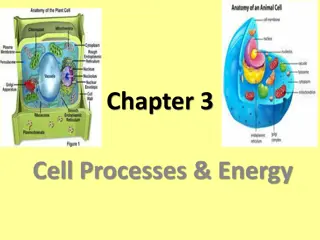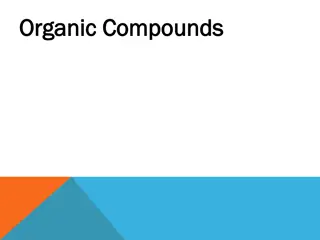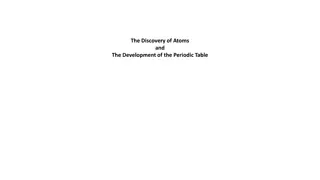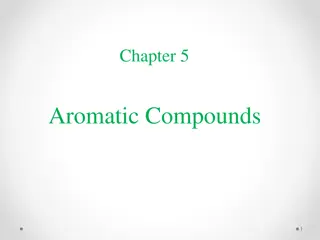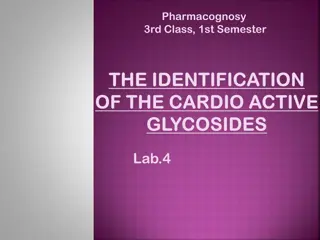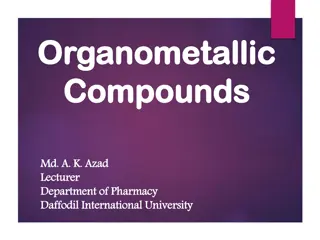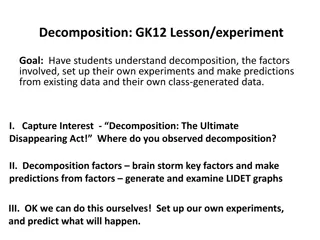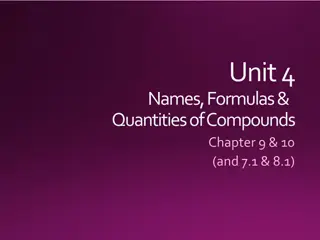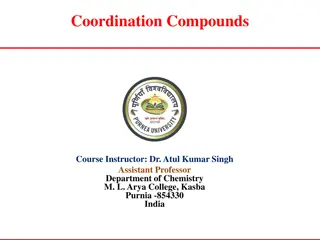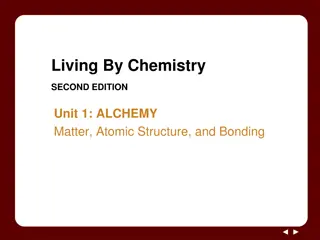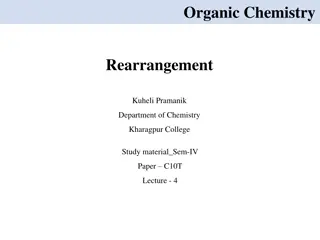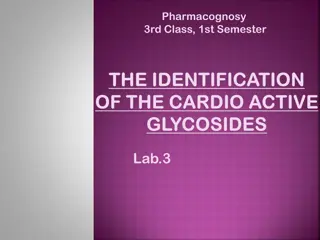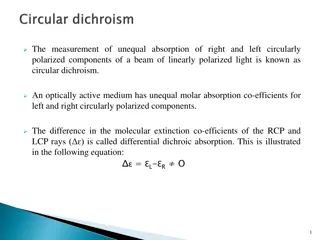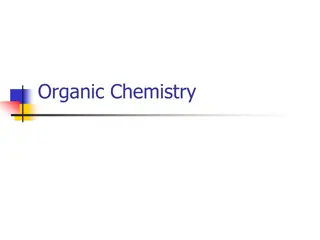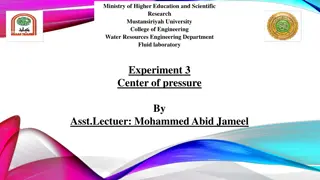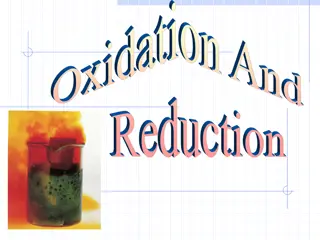Understanding Compounds and Elements through Experiments
Explore the world of compounds and elements through engaging experiments involving magnesium, oxygen, and more. Learn about the energy released when elements combine, naming conventions for various compounds, and the significance of oxygen in compound naming. Discover essential elements and their symbols to deepen your knowledge of chemistry concepts.
Download Presentation

Please find below an Image/Link to download the presentation.
The content on the website is provided AS IS for your information and personal use only. It may not be sold, licensed, or shared on other websites without obtaining consent from the author. Download presentation by click this link. If you encounter any issues during the download, it is possible that the publisher has removed the file from their server.
E N D
Presentation Transcript
Elements make compounds Substances Miss Doig
Explosive experiment Goggles, bench mat, tongs, bunsen, lighter and magnesium. CAREFULLY put magnesium in flame.
Making a compound What energy is being released? -When magnesium is burned, energy is released as light. Is there a new substance being formed? -A new substance forms, it is white. Is this new substance lighter or heavier? -This new substance is heavier as there are two different elements in the substance, they are magnesium and oxygen.
Elements make compounds When elements join to make a compound, energy is released and a new substance is formed. A word which means energy released is exothermic. What do you think endothermic means?
Naming Compounds Substances
Elements and symbols that you should know: 8) Oxygen 9) Fluorine 10)Neon 11)Magnesium 12)Aluminium 13)Silicon 14)Phosphorus O F Ne Mg Al Si P 1) Hydrogen 2) Helium 3) Lithium 4) Beryllium 5) Boron 6) Carbon 7) Nitrogen H He Li Be B C N
If two identical elements combine then the name doesn t change. .e.g. oxygen + oxygen oxygen This happens with the following elements: 1) H2 2) N2 3) O2 These elements always go around in pairs. For example, hydrogen looks like this:
When two elements join the name ends with ____ide e.g. Magnesium + oxygen oxide magnesium 1) Sodium + chlorine 2) Magnesium + fluorine
When three or more elements combine and one of them is oxygen the ending is _____ite or ________ate e.g. Copper + sulphur + oxygen Copper sulphate 1) Calcium + carbon + oxygen 2) Potassium + carbon + oxygen 3) Sodium + sulphur + oxygen
This powerpoint was kindly donated to www.worldofteaching.com http://www.worldofteaching.com is home to over a thousand powerpoints submitted by teachers. This is a completely free site and requires no registration. Please visit and I hope it will help in your teaching.
